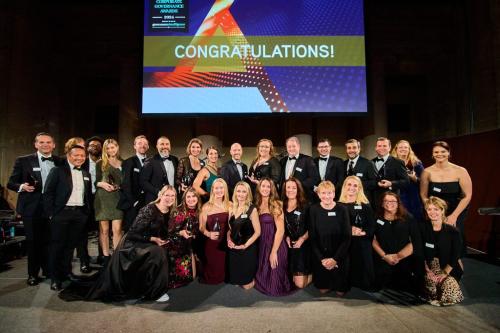Abating risk taken on by companies is as much about synching ERM processes as getting directors to talk about it
Given that widespread failure in risk oversight led in part to the global financial collapse, risk management is garnering new attention among senior management and corporate boards. While this renewed focus is leading to new strategies for enterprise risk management (ERM), it is also leading to a reevaluation of director responsibilities and liabilities.
Leading the ‘Risk management in the boardroom’ webinar during the National Directors Institute, Steve Shappell, Aon’s managing director and national practice group leader, financial services group legal and claims practice, and Foley partners Gordon Davenport and John Landis focused on how underwriters are dealing with insuring the directors and officers facing stronger accountability for the risk their companies take on.
Noting an increase in the dollar value of average and median legal settlements over the last year, Shappell said that although these are ‘alarming trends’ insurers can spread their exposure more and can also ‘address the risk of severity increases by limiting their attachment.’ Overall, Shappell said, shareholder class actions go up while markets go down, with ‘the insurance market [lagging] by a year.’
Despite a more activist sentiment among litigants, a large number of actions do not make it to the settlement stage. The growing dismissal rate of cases filed softens the potential blow, with more cases dismissed than settled in 2008. And with the exception of financial institutions, premiums continue to decrease across most sectors, including information technology and healthcare. ‘This shows better response and better underwriting by the market in this climate,’ observed Shappell. ‘They’re distinguishing risk at a really excellent pace.’ Unlike in other sectors of the market, not everyone is penalized for the financial institutions’ failures, concluded Shappell, stating that the cost of D&O insurance is actually less now than it was in 2000.
Enterprising risk
Now that Standard & Poor’s as well as other leading credit rating agencies are looking at ERM in rating the credit of non-financial institutions, CEOs and CFOs of these companies need to be taking risk management strategies a lot more seriously. And with a great deal more interest on the part of other stakeholders, boards are also under pressure to better understand risk. According to Laura Taylor, managing director, strategic account management at Aon, boards are doing just that, which in turn is lowering the margin for error. Jeff Stolle, director of risk management at Career Education Corporation (CEC), said CEC’s board is enhancing its focus on risk, acting on its awareness of the need for ‘executive level and board commitment.’ Additionally, taking a unified approach to governance, risk and compliance can alleviate redundancy.
Eric Blanchard, general counsel of United Stationers, also embraces the top-down attitude, underscoring the need for ERM to be cross-functional to get both a regulatory and operational perspective. In implementing the process at Union Stationers, Blanchard said, they looked at identifying risks, mitigating strategies, and getting feedback from directors, which was informed by their experience at other companies. They also looked closely at models to ‘build [ERM processes] into our planning process’ to prioritize them and be prepared to deal with them.
‘By focusing on all risks at the same time, you tend to avoid some of the silo thinking that tends to go on, where everyone’s thinking just about the risks and their function,’ Blanchard warned. That can have the adverse effect of impeding a company’s ability to implement a widespread overall mitigation strategy. As Taylor remarked, the key is: ‘Embedding the thought process into the strategic process.’
Talking about risk is just as important as implementing processes to deal with it, said Ann Gariti, managing director of sales at Aon. The other item to keep in mind involves keeping the business case alive. Stolle described how his disaster recovery program was discussed at the risk committee level, looking at the business risk to ‘really reevaluate what the risk was and what we should be doing to mitigate that risk.’
Sum of its parts
Wrapping up the conversation by addressing insurance company credit analysis, Kelly Superczynski, head of the global rating agency advisory group at Aon, described the current soft underwriting cycle characterized by intense price competition and relaxed pricing and underwriting terms. Pricing is coming down for buyers, while insurers are suffering, she said. To increase profitability, they are focusing more on insuring management.
Rating agency reports can help evaluate companies in areas illuminated in the webinar including: operating performance, balance sheet strength, liquidity, financial flexibility, reinsurance, ERM, management and corporate strategy, and catastrophe exposure. And keeping an eye on each facet is a sound move, as a gestalt view may be just the thing needed to put this financial Humpty Dumpty together again.








